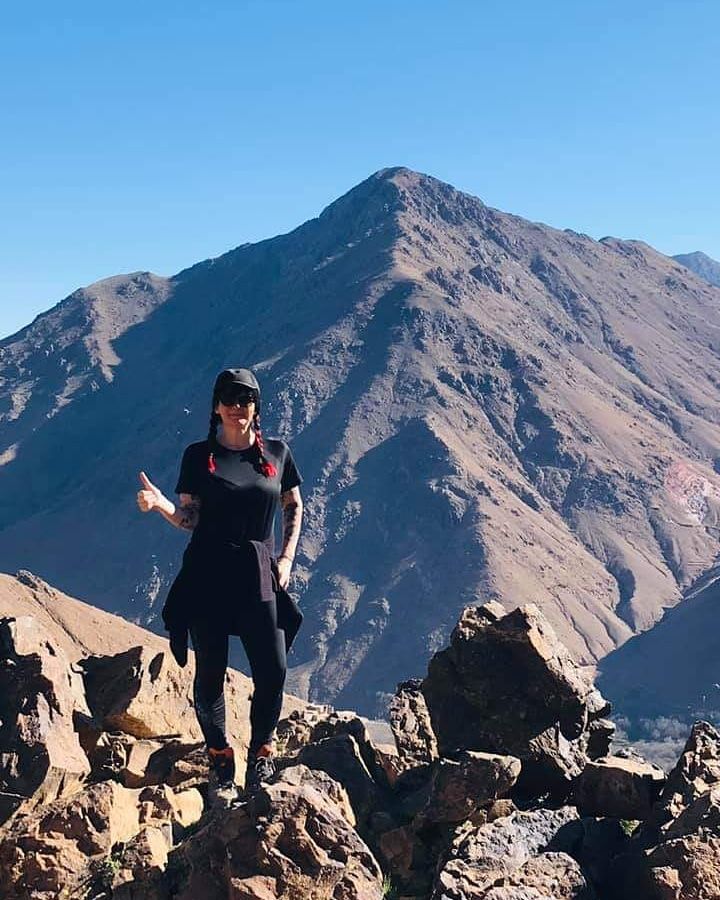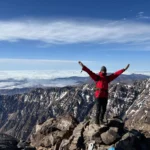For a different kind of trekking experience in the High Atlas Mountains, a trek through the Berber villages offers an immersive and culturally rich alternative to summiting a major peak. These treks are generally less demanding physically than the ascent of Mount Toubkal, making them accessible to a wider range of fitness levels. The focus is on experiencing the traditional way of life, stunning valley landscapes, and the warmth of Berber hospitality.
The Trekking Experience
Berber villages treks are typically based out of the Imlil Valley, often called the “gateway to the High Atlas.” From here, a network of trails leads you through diverse landscapes, including:
Lush Valleys: You’ll trek through verdant valleys filled with terraced fields of barley and corn, as well as groves of walnut, cherry, and apple trees.
Mountain Passes (Tizi): The routes often involve crossing various mountain passes, or “tizis,” which offer breathtaking panoramic views of the surrounding valleys and distant peaks.
Traditional Villages: The core of the experience is walking through and staying in authentic Berber villages with their characteristic mud-brick and stone houses.
Itinerary Options
Treks can be tailored to your time and fitness level, ranging from a single day trip to multi-day expeditions.
Day Trips: A popular option for those on a tight schedule. You’ll drive from Marrakech to Imlil, hike for a few hours through nearby villages like Aroumd, and often enjoy a traditional lunch in a Berber home before returning to the city.
2- to 3-Day Treks: These are very popular and allow you to explore more than one valley. A common route, for example, is the “Three Valleys Trek” which often includes the Imlil, Imnane, and Azzaden valleys. You’ll spend nights in local guesthouses (gîtes) and experience true village life.
Longer Treks (4+ Days): For a deeper dive into the region, you can extend your trek to more remote villages, perhaps incorporating a circular route around the Toubkal massif or venturing into less-traveled areas.
What to Expect
Accommodation: You will stay in guesthouses run by local Berber families. These are known as gîtes and provide a simple but comfortable place to sleep. Meals are typically traditional and delicious, with tagine and couscous being staples.
Guides and Support: A certified local guide is highly recommended, as they are not only navigators but also cultural interpreters. They can arrange for mules to carry your main luggage, allowing you to trek with only a daypack. A cook may also be part of the team, ensuring you have fresh, home-cooked meals.
Difficulty: These treks are generally of a moderate grade. While they involve several hours of walking each day and significant elevation changes, they are not technical and don’t require specialized mountaineering skills. A reasonable level of fitness is all that’s needed.
Cultural Exchange: The highlight of these treks is the direct interaction with the Berber people. You will be welcomed with mint tea, learn about their ancient culture, and get a firsthand look at their farming and herding traditions.
Best Time to Go
The best seasons for a Berber villages trek are spring (March-May) and autumn (September-October). The weather is pleasant for trekking, the valleys are lush and green from the spring rains, and the harvests are in full swing in autumn. Winter treks are possible but can be cold, and some trails may be snow-covered. Summer can be very hot, especially in the afternoon.


